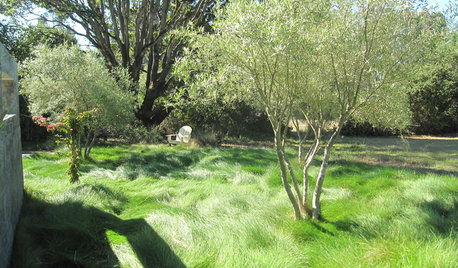Intensive preventative sprays
drew51 SE MI Z5b/6a
9 years ago
Related Stories

MATERIALSInsulation Basics: What to Know About Spray Foam
Learn what exactly spray foam is, the pros and cons of using it and why you shouldn’t mess around with installation
Full Story
DIY PROJECTSDining Set Makeover: Paint and Tea-Tinted Fabric Make Old Chairs New
Reclaim dated dining chairs for far less than buying new, using spray paint, modern fabric and a handful of tea bags
Full Story
MONTHLY HOME CHECKLISTSYour Fall Home Maintenance Checklist
Prep your house and yard for cold weather with this list of things to do in an hour or over a weekend
Full Story
HOME INNOVATIONSNow Approaching the Emerald City
Urbanites are spraying moss graffiti on walls and covering roofs in plants — and city regulators and designers are supporting the cause
Full Story
GARDENING AND LANDSCAPING7 Ornamental Grasses for Coastal Gardens
These hardy seashore plants evoke the ocean, sway in the breeze and help prevent sand erosion in the landscape
Full Story
MOST POPULARHow to Get Rid of Those Pesky Summer Fruit Flies
Learn what fruit flies are, how to prevent them and how to get rid of them in your home
Full Story
LIFEHow Your Landscaping Can Keep Burglars Away
Prevent home break-ins with strategic landscaping and good practices instead of menacing — and maybe less effective — measures
Full Story
HOUSEKEEPINGOut, Darn Spot! Tips for Removing Carpet Stains
Know the right solutions and when to use them to prevent stains from pets, soda, chocolate, blood and more
Full Story
EDIBLE GARDENSNatural Ways to Get Rid of Weeds in Your Garden
Use these techniques to help prevent the spread of weeds and to learn about your soil
Full Story
GREEN BUILDINGInsulation Basics: Designing for Temperature Extremes in Any Season
Stay comfy during unpredictable weather — and prevent unexpected bills — by efficiently insulating and shading your home
Full Story






jtburton
drew51 SE MI Z5b/6aOriginal Author
Related Professionals
South Elgin Landscape Architects & Landscape Designers · Bethlehem Landscape Contractors · College Park Landscape Contractors · Crystal Landscape Contractors · Eustis Landscape Contractors · Framingham Landscape Contractors · Kahului Landscape Contractors · Peoria Landscape Contractors · Richmond Landscape Contractors · Vancouver Landscape Contractors · Wallingford Landscape Contractors · Westchester Landscape Contractors · Whittier Landscape Contractors · 07920 Landscape Contractors · Sun Valley Landscape Contractorsalan haigh
jtburton
drew51 SE MI Z5b/6aOriginal Author
alan haigh
rob_343
drew51 SE MI Z5b/6aOriginal Author
drew51 SE MI Z5b/6aOriginal Author
alan haigh
jtburton
appleseed70
Michael
alan haigh
Michael
appleseed70
alan haigh
mrsg47